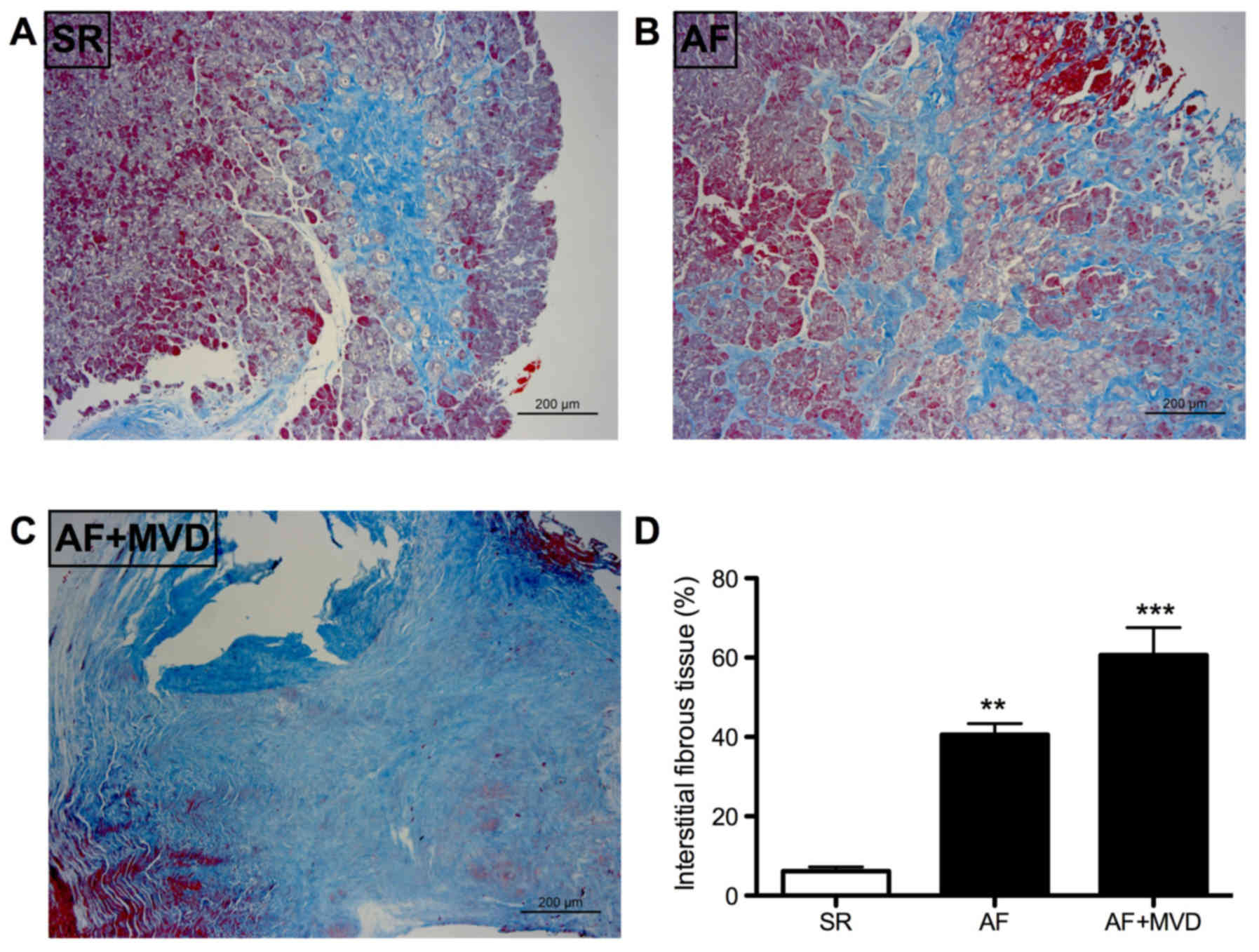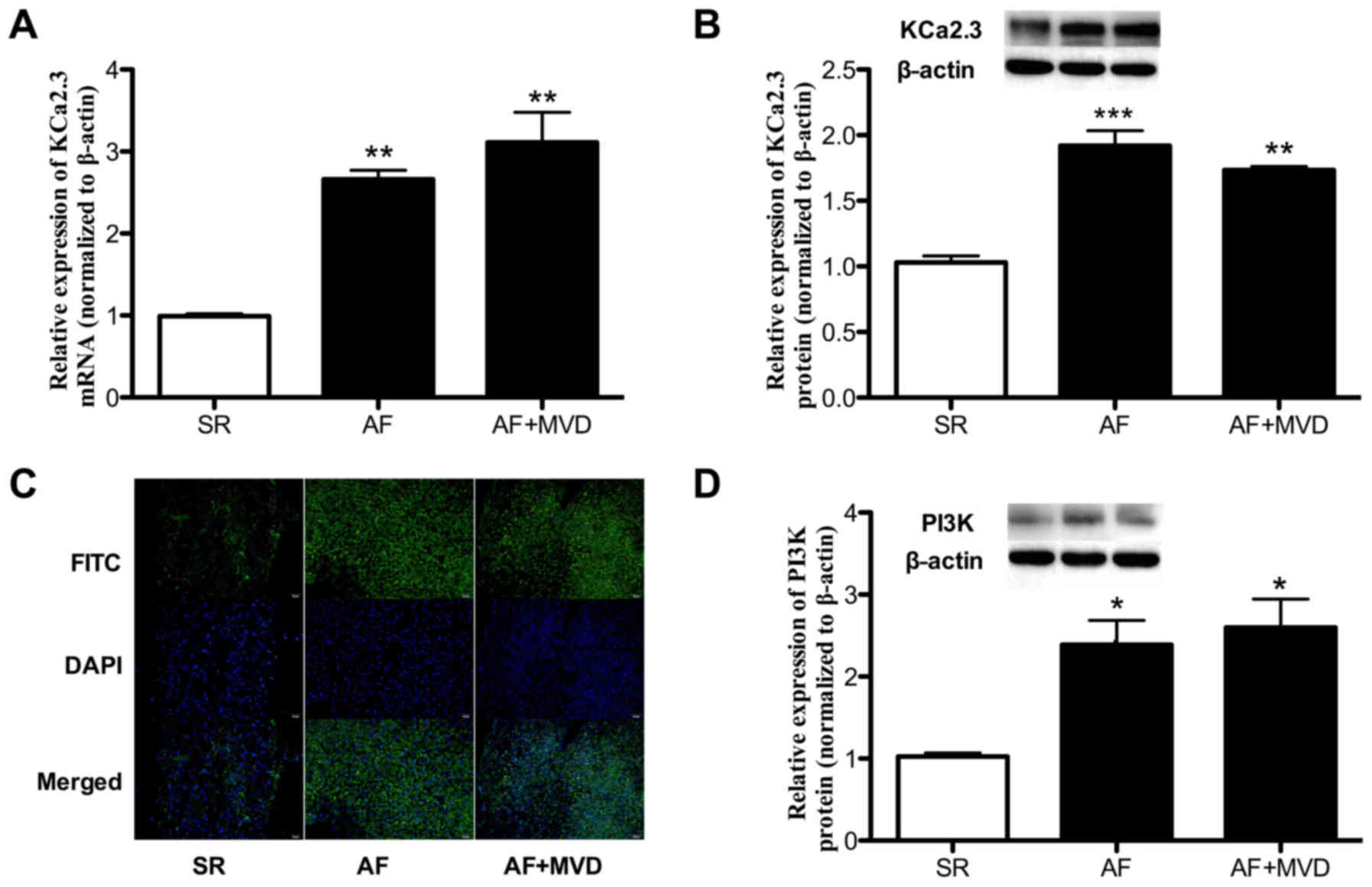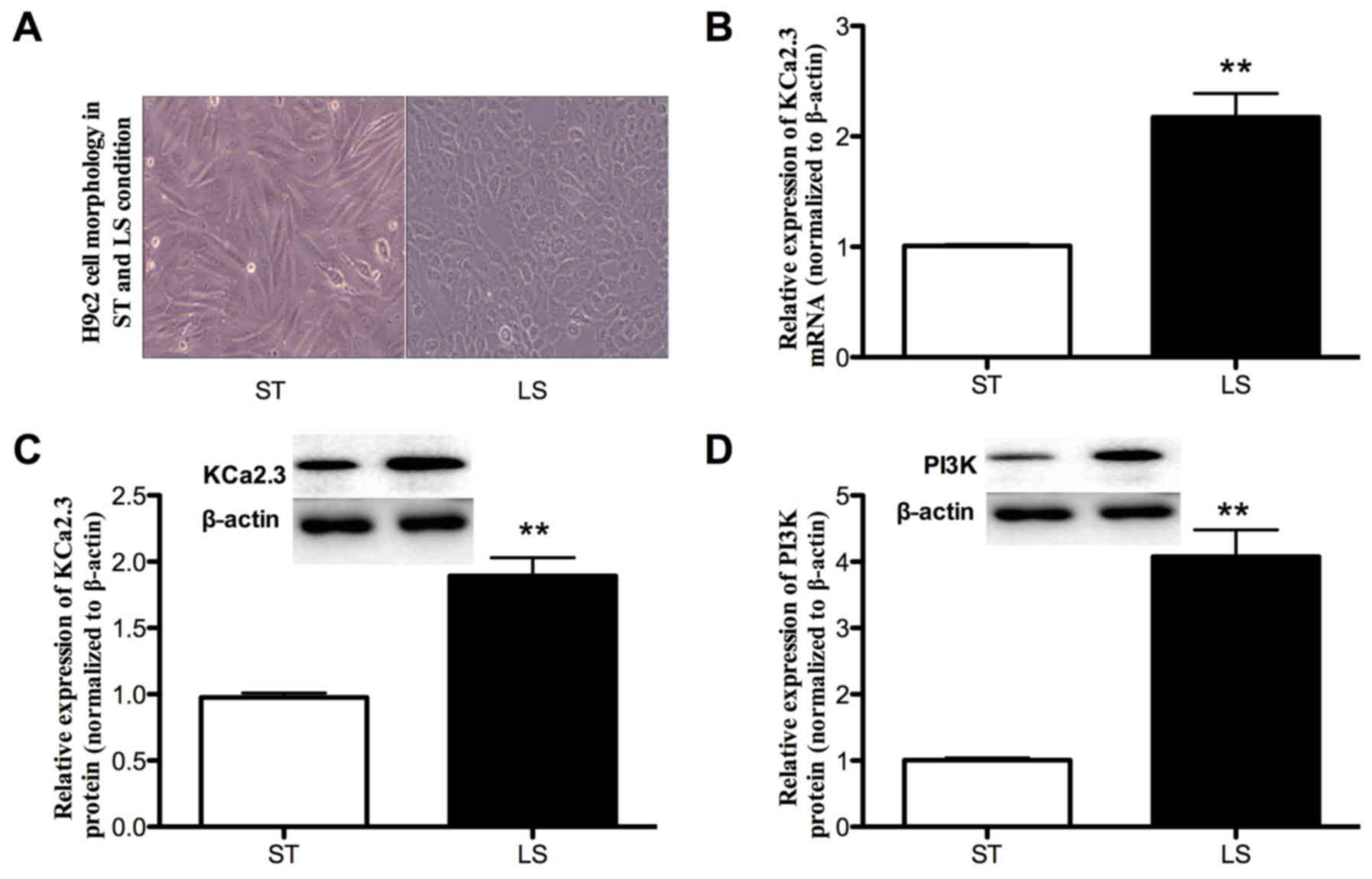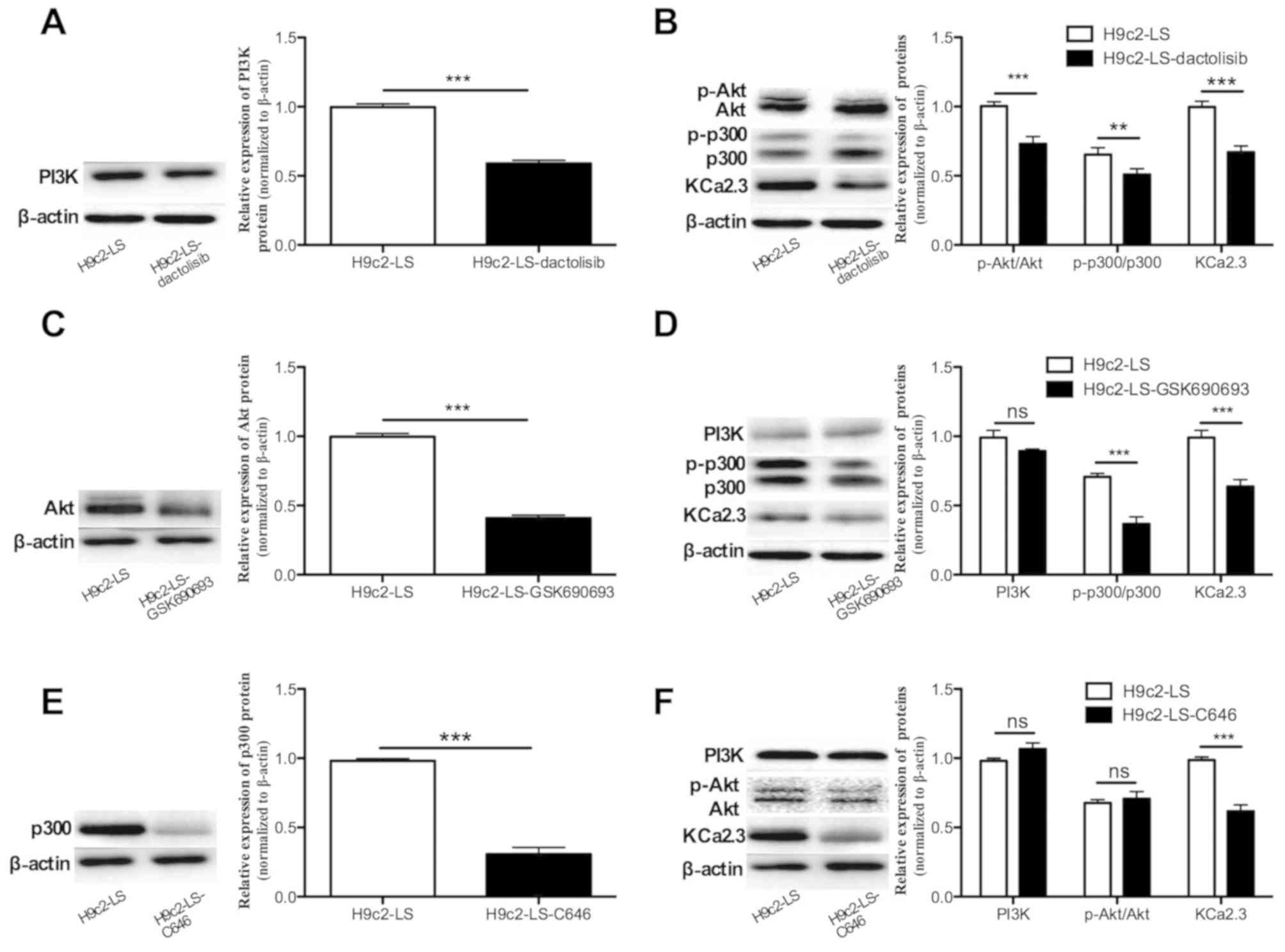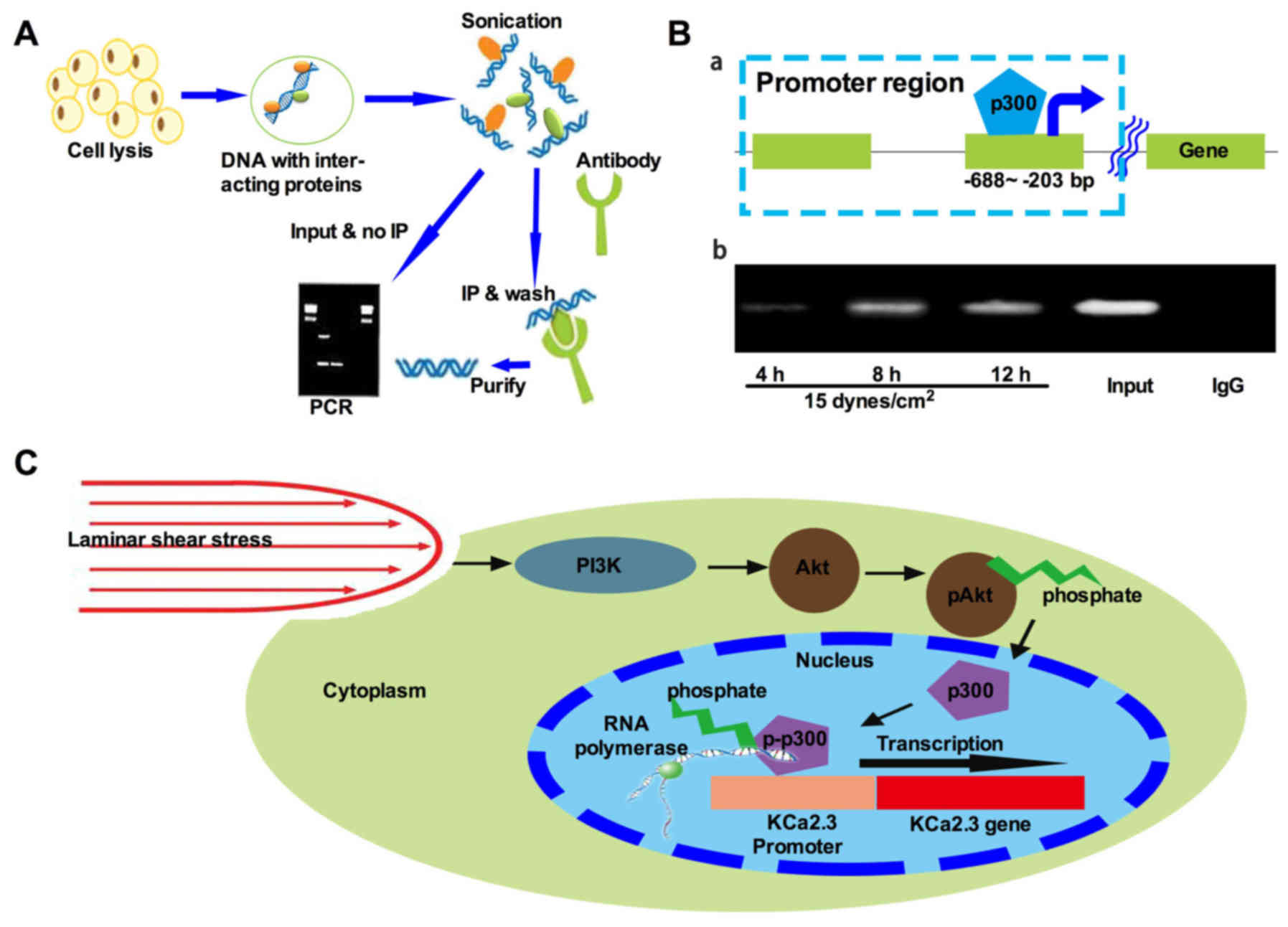|
1
|
Go AS, Hylek EM, Phillips KA, Chang Y,
Henault LE, Selby JV and Singer DE: Prevalence of diagnosed atrial
fibrillation in adults: national implications for rhythm management
and stroke prevention: the AnTicoagulation and Risk Factors in
Atrial Fibrillation (ATRIA) Study. JAMA. 285:2370–2375. 2001.
View Article : Google Scholar : PubMed/NCBI
|
|
2
|
Chugh SS, Havmoeller R, Narayanan K, Singh
D, Rienstra M, Benjamin EJ, Gillum RF, Kim YH, McAnulty JH Jr,
Zheng ZJ, et al: Worldwide epidemiology of atrial fibrillation: A
Global Burden of Disease 2010 study. Circulation. 129:837–847.
2014. View Article : Google Scholar :
|
|
3
|
Benjamin EJ, Wolf PA, D'Agostino RB,
Silbershatz H, Kannel WB and Levy D: Impact of atrial fibrillation
on the risk of death: The Framingham Heart Study. Circulation.
98:946–952. 1998. View Article : Google Scholar : PubMed/NCBI
|
|
4
|
Ynsaurriaga FA, Peinado RP and Ormaetxe
Merodio JM: Atrial fibrillation and quality of life related to
disease and treatment: Focus on anticoagulation. Future Cardiol.
10:381–393. 2014. View Article : Google Scholar : PubMed/NCBI
|
|
5
|
Colilla S, Crow A, Petkun W, Singer DE,
Simon T and Liu X: Estimates of current and future incidence and
prevalence of atrial fibrillation in the U.S. adult population. Am
J Cardiol. 112:1142–1147. 2013. View Article : Google Scholar : PubMed/NCBI
|
|
6
|
Kwan HY, Leung PC, Huang Y and Yao X:
Depletion of intracellular Ca2+ stores sensitizes the
flow-induced Ca2+ influx in rat endothelial cells. Circ
Res. 92:286–292. 2003. View Article : Google Scholar : PubMed/NCBI
|
|
7
|
Grgic I, Kaistha BP, Hoyer J and Köhler R:
Endothelial Ca+-activated K+ channels in
normal and impaired EDHF-dilator responses–relevance to
cardiovascular pathologies and drug discovery. Br J Pharmacol.
157:509–526. 2009. View Article : Google Scholar : PubMed/NCBI
|
|
8
|
Takai J, Santu A, Zheng H, Koh SD, Ohta M,
Filimban LM, Lemaître V, Teraoka R, Jo H and Miura H: Laminar shear
stress upregulates endothelial Ca2+-activated
K+ channels KCa2.3 and KCa3.1 via a
Ca2+/calmodulin-dependent protein kinase kinase/Akt/p300
cascade. Am J Physiol Heart Circ Physiol. 305:H484–H493. 2013.
View Article : Google Scholar : PubMed/NCBI
|
|
9
|
Ledoux J, Werner ME, Brayden JE and Nelson
MT: Calcium-activated potassium channels and the regulation of
vascular tone. Physiology (Bethesda). 21:69–78. 2006.
|
|
10
|
Brähler S, Kaistha A, Schmidt VJ, Wölfle
SE, Busch C, Kaistha BP, Kacik M, Hasenau AL, Grgic I, Si H, et al:
Genetic deficit of SK3 and IK1 channels disrupts the
endothelium-derived hyperpolarizing factor vasodilator pathway and
causes hypertension. Circulation. 119:2323–2332. 2009. View Article : Google Scholar : PubMed/NCBI
|
|
11
|
Milkau M, Köhler R and de Wit C: Crucial
importance of the endothelial K+ channel SK3 and
connexin40 in arteriolar dilations during skeletal muscle
contraction. FASEB J. 24:3572–3579. 2010. View Article : Google Scholar : PubMed/NCBI
|
|
12
|
Si H, Heyken WT, Wölfle SE, Tysiac M,
Schubert R, Grgic I, Vilianovich L, Giebing G, Maier T, Gross V, et
al: Impaired endothelium-derived hyperpolarizing factor-mediated
dilations and increased blood pressure in mice deficient of the
intermediate-conductance Ca2+-activated K+
channel. Circ Res. 99:537–544. 2006. View Article : Google Scholar : PubMed/NCBI
|
|
13
|
Diness JG, Skibsbye L, Jespersen T,
Bartels ED, Sørensen US, Hansen RS and Grunnet M: Effects on atrial
fibrillation in aged hypertensive rats by
Ca(2+)-activated K(+) channel inhibition.
Hypertension. 57:1129–1135. 2011. View Article : Google Scholar : PubMed/NCBI
|
|
14
|
Qi XY, Diness JG, Brundel BJ, Zhou XB,
Naud P, Wu CT, Huang H, Harada M, Aflaki M, Dobrev D, et al: Role
of small-conductance calcium-activated potassium channels in atrial
electrophysiology and fibrillation in the dog. Circulation.
129:430–440. 2014. View Article : Google Scholar
|
|
15
|
McMullen JR, Amirahmadi F, Woodcock EA,
Schinke-Braun M, Bouwman RD, Hewitt KA, Mollica JP, Zhang L, Zhang
Y, Shioi T, et al: Protective effects of exercise and
phosphoinositide 3-kinase(p110alpha) signaling in dilated and
hypertrophic cardiomyopathy. Proc Natl Acad Sci USA. 104:612–617.
2007. View Article : Google Scholar : PubMed/NCBI
|
|
16
|
Rossello X, Riquelme JA, He Z, Taferner S,
Vanhaesebroeck B, Davidson SM and Yellon DM: The role of PI3Kα
isoform in cardioprotection. Basic Res Cardiol. 112:662017.
View Article : Google Scholar
|
|
17
|
McMullen JR, Boey EJ, Ooi JY, Seymour JF,
Keating MJ and Tam CS: Ibrutinib increases the risk of atrial
fibrillation, potentially through inhibition of cardiac PI3K-Akt
signaling. Blood. 124:3829–3830. 2014. View Article : Google Scholar : PubMed/NCBI
|
|
18
|
Ezeani M and Elom S: Necessity to evaluate
PI3K/Akt signalling pathway in proarrhythmia. Open Heart.
4:e0005962017. View Article : Google Scholar : PubMed/NCBI
|
|
19
|
Seyed Jafari SM and Hunger RE: IHC Optical
Density Score: A new practical method for quantitative
immunohistochemistry image analysis. Appl Immunohistochem Mol
Morphol. 25:e12–e13. 2017. View Article : Google Scholar
|
|
20
|
Livak KJ and Schmittgen TD: Analysis of
relative gene expression data using real-time quantitative PCR and
the 2(−Delta Delta C(T)) Method. Methods. 25:402–408. 2001.
View Article : Google Scholar
|
|
21
|
Wu CY, Hsieh HL, Sun CC, Tseng CP and Yang
CM: IL-1 beta induces proMMP-9 expression via c-Src-dependent
PDGFR/ PI3K/Akt/p300 cascade in rat brain astrocytes. J Neurochem.
105:1499–1512. 2008. View Article : Google Scholar : PubMed/NCBI
|
|
22
|
Huang WC and Chen CC: Akt phosphorylation
of p300 at Ser-1834 is essential for its histone acetyltransferase
and transcriptional activity. Mol Cell Biol. 25:6592–6602. 2005.
View Article : Google Scholar : PubMed/NCBI
|
|
23
|
Zoni-Berisso M, Lercari F, Carazza T and
Domenicucci S: Epidemiology of atrial fibrillation: European
perspective. Clin Epidemiol. 6:213–220. 2014. View Article : Google Scholar : PubMed/NCBI
|
|
24
|
Nattel S and Harada M: Atrial remodeling
and atrial fibrillation: Recent advances and translational
perspectives. J Am Coll Cardiol. 63:2335–2345. 2014. View Article : Google Scholar : PubMed/NCBI
|
|
25
|
Iwasaki YK, Nishida K, Kato T and Nattel
S: Atrial fibrillation pathophysiology: Implications for
management. Circulation. 124:2264–2274. 2011. View Article : Google Scholar : PubMed/NCBI
|
|
26
|
Frustaci A, Chimenti C, Bellocci F,
Morgante E, Russo MA and Maseri A: Histological substrate of atrial
biopsies in patients with lone atrial fibrillation. Circulation.
96:1180–1184. 1997. View Article : Google Scholar : PubMed/NCBI
|
|
27
|
Friedrichs K, Baldus S and Klinke A:
Fibrosis in atrial fibrillation - role of reactive species and MPO.
Front Physiol. 3:2142012. View Article : Google Scholar : PubMed/NCBI
|
|
28
|
Tan AY and Zimetbaum P: Atrial
fibrillation and atrial fibrosis. J Cardiovasc Pharmacol.
57:625–629. 2011. View Article : Google Scholar : PubMed/NCBI
|
|
29
|
Wandall-Frostholm C, Skaarup LM, Sadda V,
Nielsen G, Hedegaard ER, Mogensen S, Köhler R and Simonsen U:
Pulmonary hypertension in wild type mice and animals with genetic
deficit in KCa2.3 and KCa3.1 channels. PLoS One. 9:e976872014.
View Article : Google Scholar : PubMed/NCBI
|
|
30
|
Pretorius L, Du XJ, Woodcock EA, Kiriazis
H, Lin RC, Marasco S, Medcalf RL, Ming Z, Head GA, Tan JW, et al:
Reduced phosphoinositide 3-kinase (p110alpha) activation increases
the susceptibility to atrial fibrillation. Am J Pathol.
175:998–1009. 2009. View Article : Google Scholar : PubMed/NCBI
|
|
31
|
Fang MC, Singer DE, Chang Y, Hylek EM,
Henault LE, Jensvold NG and Go AS: Gender differences in the risk
of ischemic stroke and peripheral embolism in atrial fibrillation:
The AnTicoagulation and Risk factors In Atrial fibrillation (ATRIA)
study. Circulation. 112:1687–1691. 2005. View Article : Google Scholar : PubMed/NCBI
|
|
32
|
Dagres N, Nieuwlaat R, Vardas PE, Andresen
D, Lévy S, Cobbe S, Kremastinos DT, Breithardt G, Cokkinos DV and
Crijns HJ: Gender-related differences in presentation, treatment,
and outcome of patients with atrial fibrillation in Europe: A
report from the Euro Heart Survey on Atrial Fibrillation. J Am Coll
Cardiol. 49:572–577. 2007. View Article : Google Scholar : PubMed/NCBI
|
|
33
|
Shen AY, Yao JF, Brar SS, Jorgensen MB and
Chen W: Racial/ethnic differences in the risk of intracranial
hemorrhage among patients with atrial fibrillation. J Am Coll
Cardiol. 50:309–315. 2007. View Article : Google Scholar : PubMed/NCBI
|
|
34
|
Nass RD, Aiba T, Tomaselli GF and Akar FG:
Mechanisms of disease: Ion channel remodeling in the failing
ventricle. Nat Clin Pract Cardiovasc Med. 5:196–207. 2008.
View Article : Google Scholar : PubMed/NCBI
|
|
35
|
Byrd JC, Hillmen P and James DF: Response:
Additional data needed for a better understanding of the potential
relationship between atrial fibrillation and ibrutinib. Blood.
125:16732015. View Article : Google Scholar : PubMed/NCBI
|
|
36
|
Ohashi T, Sugaya Y, Sakamoto N and Sato M:
Relative contribution of physiological hydrostatic pressure and
fluid shear stress to endothelial monolayer integrity. Biomed Eng
Lett. 6:31–38. 2016. View Article : Google Scholar
|
|
37
|
Li X, Yang Q, Wang Z and Wei D: Shear
stress in atherosclerotic plaque determination. DNA Cell Biol.
33:830–838. 2014. View Article : Google Scholar : PubMed/NCBI
|
|
38
|
Butler PJ, Norwich G, Weinbaum S and Chien
S: Shear stress induces a time- and position-dependent increase in
endothelial cell membrane fluidity. Am J Physiol Cell Physiol.
280:C962–C969. 2001. View Article : Google Scholar : PubMed/NCBI
|
|
39
|
Zamanian M, Veerakumarasivam A, Abdullah S
and Rosli R: Calreticulin and cancer. Pathol Oncol Res. 19:149–154.
2013. View Article : Google Scholar : PubMed/NCBI
|
|
40
|
Fresno Vara JA, Casado E, de Castro J,
Cejas P, Belda-Iniesta C and González-Barón M: PI3K/Akt signalling
pathway and cancer. Cancer Treat Rev. 30:193–204. 2004. View Article : Google Scholar : PubMed/NCBI
|
|
41
|
Dai G, Vaughn S, Zhang Y, Wang ET,
Garcia-Cardena G and Gimbrone MA Jr: Biomechanical forces in
atherosclerosis-resistant vascular regions regulate endothelial
redox balance via phosphoinositol 3-kinase/Akt-dependent activation
of Nrf2. Circ Res. 101:723–733. 2007. View Article : Google Scholar : PubMed/NCBI
|



